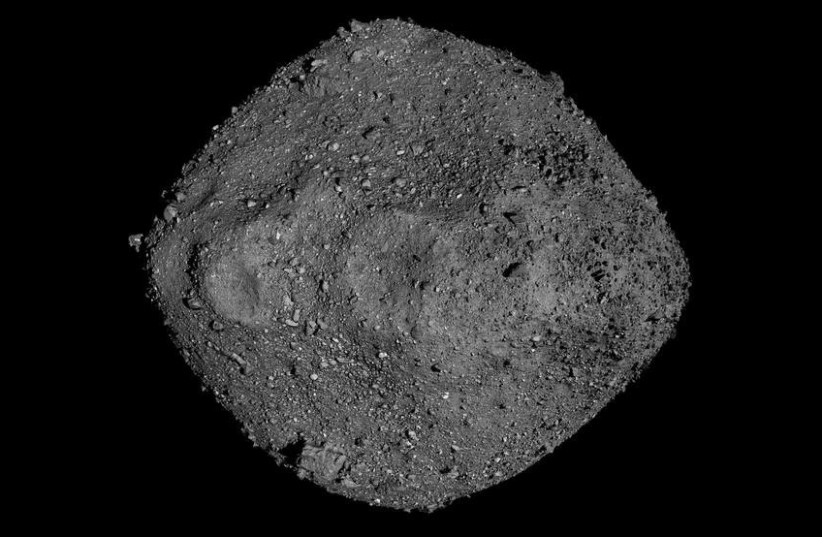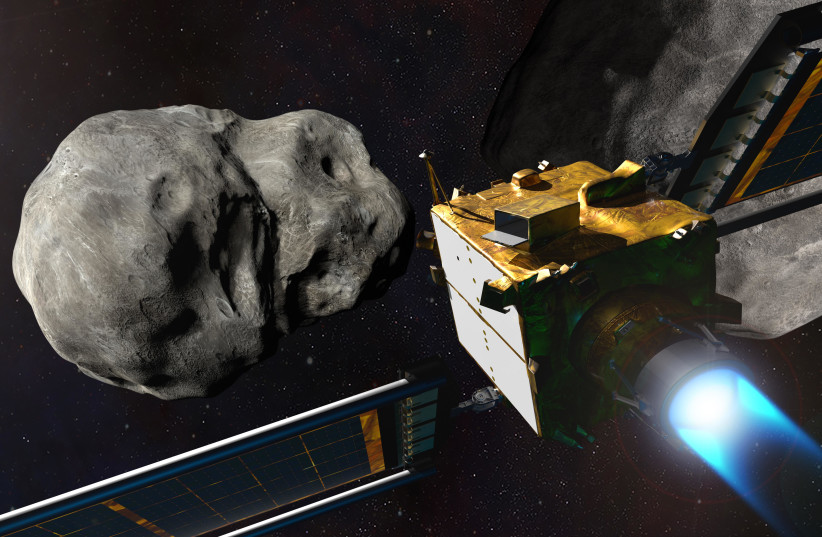An asteroid just a bit smaller than the historic ocean liner the Titanic is barreling toward Earth's direction and will pass the planet on Monday, according to NASA's asteroid tracker.
The asteroid has been designated 2012 BV13, according to the Center for Near-Earth Object Studies (CNEOS) at NASA's Jet Propulsion Laboratory (JPL).
How big is the asteroid coming toward Earth in 2023?
The asteroid in question is actually somewhat on the larger side.
According to NASA's estimates, asteroid 2012 BV13 has a diameter ranging from 100 meters to 220 meters.

For comparison, the Titanic, the infamous passenger ship that sunk in the Atlantic Ocean, taking 1,500 lives and earning James Cameron billions of dollars at the box office, was 269 meters. This means the incoming asteroid is just a bit smaller.
But while the Titanic sailed at a speed of 23 knots (45.59 kilometers per hour), asteroid 2012 BV13 is much faster, clocking in at 6.68 kilometers per second, or 24,048 kilometers per hour.
In addition, asteroid 2012 BV13 is an Aten-class asteroid, meaning it has an orbit around the Sun that on occasion overlaps with Earth's orbit, but is primarily located between the Earth and the Sun.
Will an asteroid hit the Earth in 2023?
With a new year comes new beginnings and new chances a large space rock will crash into the planet, more in line with Don't Look Up – another Leonardo DiCaprio movie – than Titanic.
However, almost everyone around the world isn't putting "asteroid impact" as their 2023 New Year's resolution, and clearly, the planet seems to agree since NASA has calculated that asteroid 2012 BV13 will not impact the Earth now.
According to these calculations, asteroid BV13 will pass Earth at a distance of 4.65 million kilometers. That may seem far – and it is – but on a cosmic scale it is still somewhat close.
But compare this to the Moon, which orbits the Earth at an average distance of 385,000 kilometers, which is significantly closer.
And it's a good thing asteroid 2012 BV13 isn't going to hit us because the result wouldn't be pretty if it did.
According to research from the Davidson Institute of Science, the educational arm of Israel's Weizmann Institute of Science, an asteroid 140 meters in diameter or more would release an amount of energy at least a thousand times greater than that released by the first atomic bomb if it impacted Earth.
An even larger asteroid that's over 300 meters wide – like the Apophis asteroid – could destroy an entire continent. An asteroid over a kilometer in width – like asteroid 138971 (2001 CB21), which passed the Earth in early March 2022 – could trigger a worldwide cataclysm.
At a possible 220 meters in diameter, asteroid 2012 BV13 could do a lot more than just sink against an iceberg – rather it could cause possibly millions of deaths and severe destruction.
But it won't happen, so we're good.
Asteroids have hit the Earth recently though.
Back in March 2022, a small asteroid around half the size of a giraffe known as 2022 EB5 hit the Earth just hours after its discovery. But given how small it was, it didn't exactly result in any damage.
More recently, in late November 2022, tiny asteroid 2022 WJ1 harmlessly exploded into fragments that scattered around Lake Ontario. NASA had predicted that this small meter-long asteroid would impact at this location and knew there wouldn't be any harm from it.
When is the next asteroid predicted to hit the Earth?
Not for a very, very long time, at least in terms of apocalyptic-level collisions.
NASA has checked the numbers. According to them, Earth is safe from any catastrophic asteroid impacts for the next century, meaning no asteroid-induced Armageddon is on its way.

Which asteroid could potentially hit Earth?
At this moment, scientists don't know for sure. However, there are a few candidates for the most dangerous asteroid for the planet.
One of the most dangerous asteroids at the time of writing is the gigantic 500-meter-wide asteroid Bennu, which has an orbit that can cross with Earth's own.
If this asteroid impacted the Earth, the result would be catastrophic – but as far as NASA is aware, this won't be for a long time, if ever.

Do we have any way to stop an asteroid from hitting the Earth?
We just might, thanks to the hard work of scientists around the world.
The field of planetary defense is specifically organized to find ways of keeping the Earth safe from asteroids and scientists at NASA and across the globe are hard at work trying to do just that.
Most notably, this has involved pioneering the exciting technique of asteroid deflection, which uses kinetic energy through vehicular collision to ever so slightly change an asteroid's orbital path, meaning it would, in theory, no longer be set to crash into Earth but instead fly past it.
In layman's terms, NASA decided to make a spacecraft punch an asteroid to make it move out of the way.
In fact, that is exactly what recently happened in September in NASA's landmark Double Asteroid Redirection Test (DART) Mission, which tested out this theory on a faraway asteroid Dimorphous in the Didymous system.
And according to the results, the DART Mission was a success, managing to alter the asteroid's orbit.
And NASA isn't alone in this either. China is also getting ready to test out its own asteroid deflection mission, set to launch in 2025.
All in all, it seems that humanity is working on building the arsenal it needs to tame the asteroid menace lying in space, the final frontier.
